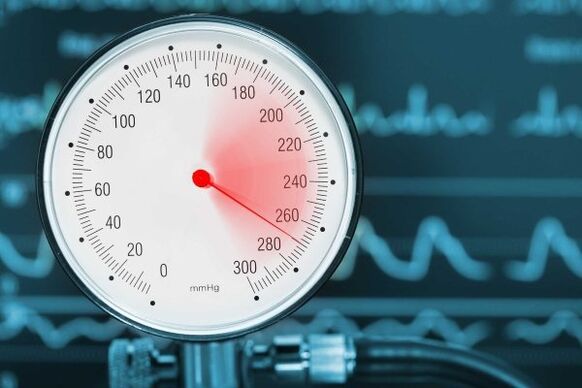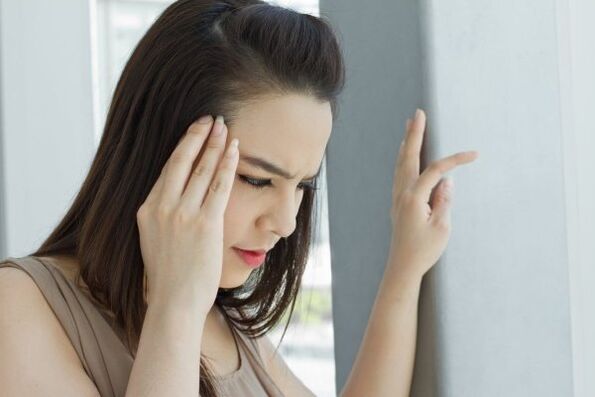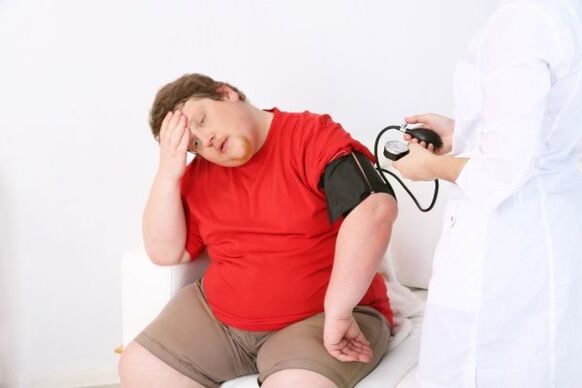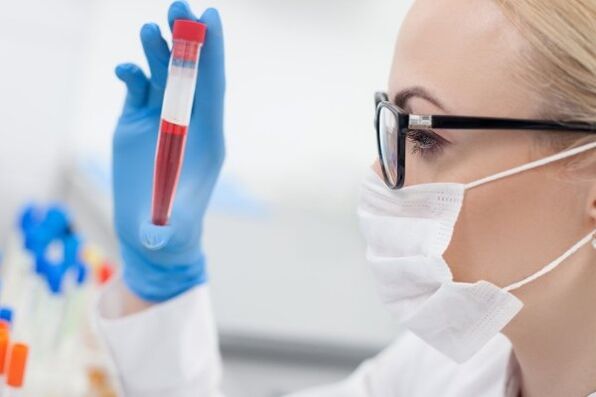Hypertension is a disease associated with periodic or constant increase in blood pressure (blood pressure).For some people, increased pressure is the norm, but this is an exception to the rules and indicators for most people are pathological.
The causes and mechanism of the development of hypertension
In a healthy person, the pressure is normal about 120/80 mm Hg.Art.At the physiological and chemical level, an increase in pressure is a natural reaction of the body to any danger or stress.In a critical situation, the adrenaline is thrown into the blood, the heart begins to work faster, the vessels narrow, the muscles contract and the pressure rises.

Regular stress, experience, lack of sleep, problems - all this can lead to a chronic increase in pressure.However, doctors also call other causes of hypertension: heredity, overweight or obesity, thyroid disorders, kidneys, magnesium deficiency in the body, taking some medicines.
The pathogenesis of hypertension is not fully understood.The hemodynamic base for increased blood pressure is an increased reverse tone due to nerve impulses coming from the central nervous system along the sympathetic pathways.
In addition to the neurogenic mechanism, other mechanisms that increase blood pressure, more special humoral, can also be included (sequentially) humoral.
The kidney factor associated with acute ischemia is also important.The inclusion of the kidney factor contributes to the development of high and stable blood pressure.The well -known role in the complex pathogenetic mechanism of hypertension is played by hormones of the cortical layer of the adrenal glands.
Thus, two groups of factors can be distinguished into the mechanism for increased blood pressure in hypertension: neurogenic, which have a direct effect on the tone of the arterioles and humoral, associated with the increased secretion of catecholamines and some other biologically active substances that cause the effect.
The mechanism of development of hypertension is complex.It involves many bodies and systems.The degree of damage to different organs for hypertension can be uneven, therefore several clinical and anatomical variants of hypertension are distinguished: with predominant damage to the vessels of the kidneys, heart and brain.
Symptoms
Blood pressure is blood pressure, which depends on the constant strokes of the heart, which performs the function of its pump.It gives about 70-90 cuts per minute.By measuring blood pressure, we take into account two digits: systolic pressure (at the time of heart muscle contraction) and diastolic pressure (at the time of its relaxation).Arterial hypertension is commonly called an increase in pressure above 140 to 90, respectively.
With high pressure, a number of such characteristics are usually observed:
- headache, tinnitus;
- visual disorders;
- dizziness;
- absent -exchanges;
- Memory deterioration;
- drowsiness;
- instability of blood pressure;
- nausea;
- chills;
- Swelling of the eyelids, swollen on the face in the morning;
- heartbeat of the heart;
- chills, sweating, pulsation in the head;
- redness of the face, internal tension, anxiety, irritability;
- reduction of productivity;
- swelling of the limbs, numbness of the fingers;
- Heart pain.
If any of these symptoms are observed from time to time, this is not evidence of high pressure.But if you notice the chronic presence of signs, consult a doctor.
The most common sign showing the disease is the headache.The second most important symptom of high pressure is the problems with visual perception:
- Hanging in the eyes;
- unexplain of objects;
- reduction of peripheral vision;
- attacks of blindness;
- fog in front of my eyes;
- Reducing the reaction of light.

Hypertension and Hypertension: What is the difference?
Hypertension is a chronic disease with prolonged and resistant high blood pressure, and hypertension is a resistant increase in blood pressure (that is, not a diagnosis but the condition of the body).In fact, these terms are the same, only the first indicates the name of the disease, and the second - indicates the fact of an increase in blood pressure.
Hypertension hypertension is characterized by current characteristics.While hypertension is an independent disease, arterial hypertension is a symptom of a pathological condition, which manifests itself precisely in a permanent increase in pressure.
In this way, to say that this is the same, it is only possible in the case of a hypertensive crisis.The crisis itself is characterized by a constant increase in pressure (hypertension) and at the same time occurs due to hypertension.
Stages of hypertension
For doctors, it is necessary to determine the stage of hypertension in the patient for the correct diagnosis and to make an appropriate entry in his or her medical card.If hypertension is diagnosed in the patient late, that is, on the 2nd or 3rd stages, then the consequences for the patient's body will be more serious than if the treatment of hypertension begins at the first stage.Nevertheless, few patients with hypertension at the initial stage consult a doctor or at least regularly measure blood pressure.
The first stage
140-150/90 mm Hg.Art.When blood pressure fluctuates within these limits, the patient is diagnosed with a first (mild) degree of hypertension.Hypertensive crises rarely occur, the disease is not minor.
The second stage
160-170/100-109 mm Hg.Art.- the second (moderate) degree of hypertension.Hypertensive crises are typical.Objectively recorded the narrowing of the arteries of the retina, the hypertrophy of the left ventricle.
The third stage
200-300/129 mm Hg.Art.And above.Severe hypertensive crises (very severe hypertension) often develop.The harmful effect causes hypertensive encephalopathy, left -deficiency, development of brain vessels, hemorrhoids and edema of the optic nerve and renal failure and renal failure.
Why is hypertension dangerous?
Doctors say the effects of hypertension threaten life than combined AIDS, cancer and tuberculosis.The insidiousness of this disease is that its symptoms are similar to signs of ordinary fatigue.Therefore, about half of the hypertension for their illness will be learned too late when it is very difficult to treat and it is almost impossible to stop the processes of destruction of the body that it starts.
The danger of hypertension is that it begins as a violation of blood pressure regulation functions, but in the future leads to very serious diseases of the internal organs and systems, more special about cardiovascular disease.Hypertension, which occurs without medical control, can lead to a heart attack, an increase in the heart and ultimately to heart failure.
The effects of hypertension are especially dangerous for those who have harmful factors for the killer effect on the body of high blood pressure - smoking, drinking alcohol, unhealthy eating, sedentary lifestyle, frequent stress, high cholesterol in the body and diabetes.Such people increase the risk of heart attack, stroke and kidney failure, blindness and various cognitive disorders - memory reduction, intelligence and efficiency.

Hypertension is the No. 1 killer among all cardiovascular diseases.The death rate from her over the last 25 years has increased from 98 to 107 people per 100,000 people.This is noticeable growth.50% of patients are treated quite effectively, but only 10% reach the target blood pressure, that is, below 130 to 80.
Which doctor is dealing with treatment?
With increased pressure, you should go to a specialist.The therapist conducts a preview of the patient, takes the necessary tests and determines which doctor to turn further.This characteristic is explained by the fact that the therapist is a specialist in several areas of medicine at a time.
After completing a preliminary examination, the doctor issues a recommendation to check other specialists:
- neurologist;
- cardiologist;
- nephrologist;
- Okulist;
- Endocrinologist.
Diagnostics
The easiest diagnostic method is the measurement of blood pressure.If there is a steady increase to 140/90 mm Hg.Art.And above, it means that there is hypertension.
Increased pressure is considered stable during multiple measurements (at least 2-3 times on different days for 4 weeks).
The following diagnostic methods are also used to determine the presence of hypertension:
- Urine analysis for protein and glucose;
- on hemoglobin or hematocrit;
- Determining the level of creatinine or increasing nitrogen in the blood and urine;
- Glucose level during hunger;
- electrocardiogram;
- Ultrasound of the heart, kidneys;
- Consultation of optometrist with examination of blood vessels.
Measurement of blood pressure
Measurement of blood pressure with a manual tonometer (a corporate method):
- The Tonometer cuff should be at the level of the heart (middle of the chest) 2 cm above the elbow.The finger should pass between the cuff and the arm.The cuff should cover at least 80% of the shoulder circumference and at least 40% of its length.
- Place the phonondoscope membrane on the pulse point of the shoulder artery.
- Quickly pump the air into the pear cuff (remember to close the valve in advance) so that the air does not return to the above pressure level, 20 mm Hg.Art.exceeding systolic (according to the disappearance of the pulse).
- Slowly release air from a cuff at a speed of 2 mm Hg.Art.In sec.The first heard impact corresponds to the value of the upper pressure.The level of stopping the tone corresponds to the lower pressure.If the tones are very weak, you should lift your hand, bend it and straighten it several times and repeat the measurement.
Blood and urine tests
The overall blood test or urine test for hypertension will not be informative.It is impossible to determine the cause of the disease through such indicators, but they help to determine the stage of the disease.
From a common blood test you can learn about the number of forms, as well as evaluate the presence of inflammatory processes in the body.

Evaluation of heart work
There are several methods for assessing heart work:
- The physical diagnosis involves the examination of the heart muscle using a phonondoscope.The doctor "listens" to the heart, reveals noise, a rhythm disturbance.Based on the results of physical diagnostics, an ECG is prescribed.
- ECG (electrocardiogram) is also an assessment of the work of the heart muscle, only more detailed.Such a study allows you to identify possible changes in time and to fully analyze the heart function over a period of time.
- Dopplerography is an effective ultrasound examination that helps to determine the blood condition passing through the vessels.
- Arteriography is a radiological method that evaluates the condition of the arterial walls, reveals atheromatous plaques, defects in the arteries.
Checking the bottom of the eyes
Eyes, like the heart, are considered to be a targeted organ with hypertension, therefore, when diagnosed with high pressure, an eye is examined on IFALMOLOGIST.As a rule, with hypertension at the initial stage, retinal veins and narrowing of the artery expand.These functional changes are reversible: By normalizing the pressure, blood vessels also return to normal.
In the second stage, organic changes occur, the condition worsens.Microaneurysms occur, hemorrhage can occur.
In the third stage, the condition of the optic nerve changes, the acuity and the visual field deteriorate, the visual functions are impaired.
Ultrasound
Ultrasound of the kidneys and adrenal glands evaluate the function of the kidneys.Due to the increased pressure in the organs, the nephrons die, which daily filter blood liters of toxins.In the end, this can lead to kidney failure.
Kidney ultrasound helps to identify volumetric formations in the adrenal glands, severe renal tissue lesions.Ultrasound of the renal arteries is also prescribed.
How to treat hypertension?
Methods for no -other:
- weight loss to normal;
- Smoking refusal;
- reduction of alcoholic beverages;
- moderate physical activity (regular walks in the fresh air);
- reducing salt consumption;
- Increasing the diet of plant foods rich in calcium, magnesium and potassium;
- Reducing the consumption of animal fat.
Medicinal therapy is prescribed if non -raining methods have no effect, or the patient has risk factors for the development of diabetes, hypertensive crisis, kidney damage and coronary atherosclerosis.
Medication
The development of hypertension drugs has been going on for more than ten years.But today the problem of developing new, more effective and safe means of reducing and controlling pressure is still acute for medicine and pharmacology.
Today, there are the widest assortment of such drugs, but they all differ in the type of exposure, efficiency, indications and contraindications.Their price plays an important role.Therefore, for each patient, the doctor chooses an individual regimen for the treatment of hypertension medicines based primarily on the causes of its occurrence:
- Diuretics.These drugs partially block the calcium channels, with a vasodilating effect.They are recommended if there are vascular diseases at the same time as hypertension, but the means are contraindicated for people who have suffered a myocardial infarction.
- ACE inhibitors (angiotensinoprophyting enzyme).Reducing the production of an enzyme that stimulates a decrease in the elasticity of blood vessels.They are very effective, well tolerated by patients with hypertension, favorably affect the cardiovascular system.They are often recommended after myocardial infarction as well as with increased pressure against the background of diabetes.
- Beta-Adrenosaires.Reduce your heart rate and reduce their strength.They have a wide range of administration and are recommended for angina, tachycardia, after a heart attack, against the background of heart failure.
- Medicines to reduce urgent pressure.This includes the Motherwort extract, Valerian, Peony Root.
Diet
A special product for hypertension is baked potatoes.This product is rich in potassium-the most important following element that regulates the metabolism of water-sail in the body.
The main nutrients for hypertension are potassium, calcium, magnesium.It is these trace elements that greatly contribute to a decrease in blood pressure.
The hypertension diet implies the rejection of fast food products, which are usually overloaded with sodium and helps to increase pressure.In addition, the diet should be saturated with products, also rich in calcium and magnesium:
- Grain - bread, rice, wheat of hard varieties;
- dried fruits and leafy vegetables;
- low -fat meat and poultry;
- low -fat dairy products;
- Nuts and legumes.
Treat with great caution to fatty foods as well as sweets.
Doctors claim that adherence to the diet helps maintain pressure within normal limits and thus reduces the risk of stroke by almost 40%and the heart attacks by 30%.
Life
All patients with blood pressure indicators are higher than 120-130 with 80-64 mm Hg.Art.You need to urgently change the familiar lifestyle and nutrition for them.This consists in limiting smoking and drinking alcohol, properly compiling a complete diet, exercise.
A healthy lifestyle for hypertension, as with any chronic disease, is one of the main factors for effective treatment.Therefore, changes are considered a critical step in the treatment process as well as to prevent arterial hypertension.
Folk remedies
Most patients with hypertension take special medicines, but you can also fight the disease with the help of well -known folk remedies.Think of a few effective recipes:
- Flax seeds.They contain a large amount of omega-3 fatty acids.They contribute to an increase in the level of lipoproteins with increased density in the blood, which is preventing an increase in cholesterol and the formation of atherosclerotic complications on the walls of the blood vessels.The body alone cannot synthesize this substance, so it is important to ensure that it comes with food.In linen seeds, the amount of omega-3 is 25% of the weight plus they are relatively cheap and well absorbed.Take linen seeds of 3 tablespoons a day in sliced form.
- Tincture of cranberry pine cones.Helps to normalize blood pressure and regulate post.The tincture is prepared as follows:
- Collect raw materials during the summer months, rinse under running water and pour into a liter jar;
- Pour vodka or 40-degree alcohol, then place in a dark place;
- Insist for 2-3 weeks at room temperature;
- Before you start taking, strain through the gauze, double.
- The properly prepared tincture should be dark red.Take 3 times a day half an hour before eating a teaspoon.You can mix with water or tea.
- Garlic.If you take garlic regularly, it stimulates blood flow to the vessels, prevents their walls to be deposited to oxidative degradation.Those close with excavated protruding properties of garlic help prevent blood clots.The constant use of garlic cloves helps to lower blood pressure by 7-8%.
- Two garlic tooth are thinly sliced and pour a glass of boiled water;
- Let it boil for 12 hours;
- Drink and prepare a new infusion in the morning.
- The course is a month.Take a glass twice a day.
- Lemon with cranberries and honey.Grind the lemon and mix the spoon with a spoonful of cranberries.Add half a tablespoon with ground fresh mat, a glass of honey and take a tablespoon of the product in the morning and evening.
- Plantain.Take 4 tablespoons of crushed plantan leaves.Pour a glass of vodka and let the composition cook for two weeks in a dark place.Strain the mixture and use 30 drops three times a day.

You can also prepare a garlic infusion:
Forecast
The prognosis for hypertension in the sense of absolute recovery is usually unfavorable.Only at the transistor stage is the complete termination of the possible development of the disease.However, modern treatments allow you to slow down the progression of the disease, prevent the development of complications, relieve patients' condition and maintain their ability to work for a long time.
The prognosis for the renal version of the course is very unfavorable, especially when the arteriolerosis of the kidneys develops.The prognosis is worsened by the accession of atherosclerosis at every stage of hypertension.
Prevention measures for hypertension
The prevention of hypertension is divided into primary and secondary.Primary prevention needs healthy - those whose pressure does not yet exceed the normal number.The complex of therapeutic measures from below will not only help for many years to maintain the pressure normally, but also to get rid of excess weight and significantly improve the general way -a statement:
- low -level diet;
- Limit of animal fat;
- exercises;
- psychological unloading;
- rejection of bad habits;
- Weight control.
Secondary measures are aimed at retaining blood pressure within the norm in patients with hypertension, exclusion of hypertensive crises and preventing complications of the disease.Secondary prevention-including psychological trainings that contribute to moral and emotional unloading, physiotherapy procedures, treatment in sanatoriums, the use of sedatives that improve sleep, the use of traditional medicine (hawthorn, Bozhur, valerian, mothers).
If you pay attention to hypertension in a timely manner and start treating it, you can avoid serious consequences.Pressure problems are solved not only through medicines, but also to a greater extent due to a healthy and proper lifestyle and control of their health.






















